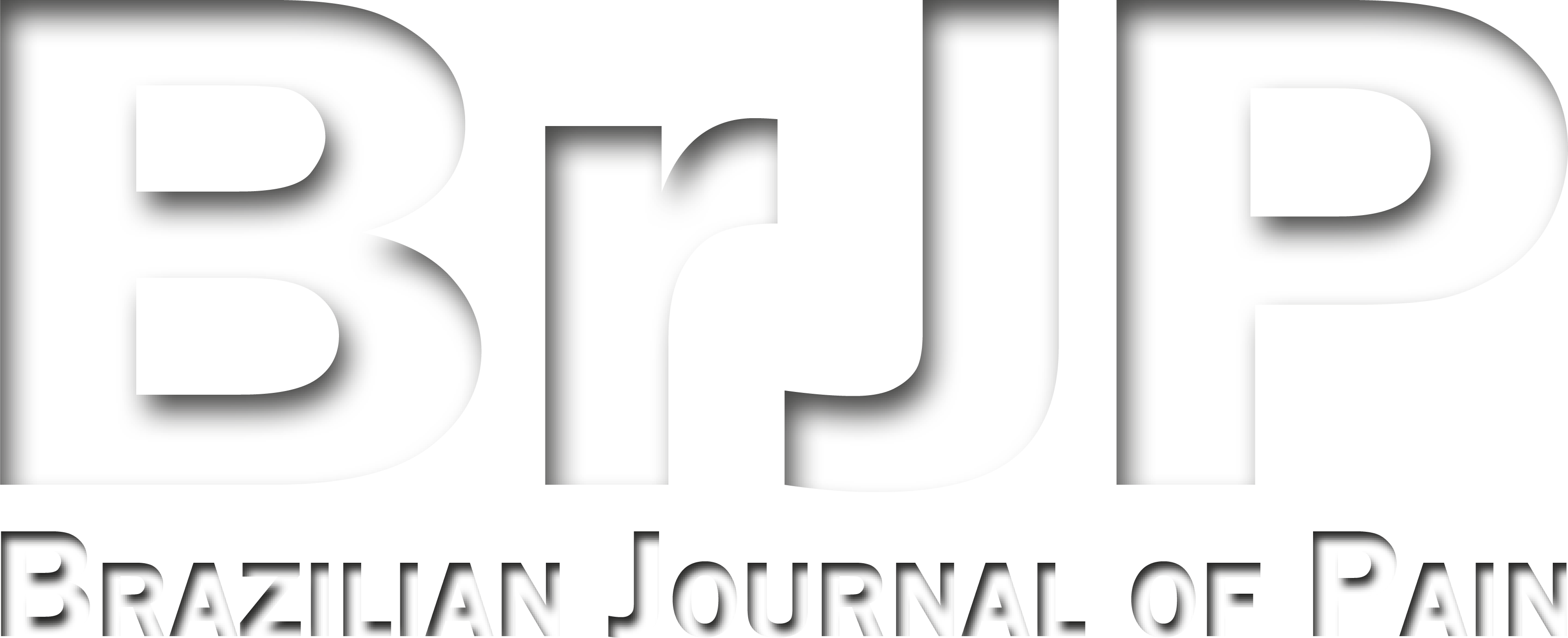Functional literacy and the assessment process as a diagnostic instrument for temporomandibular disorders: observational study
Alfabetismo funcional e o processo de avaliação como instrumento diagnóstico das disfunções temporomandibulares: estudo observacional
Adriana Hernandes Pinheiro; Luciane Lacerda Franco Rocha Rodrigues; Thiago Bezerra Leite; António Sérgio Guimarães
Abstract
Keywords
Resumo
JUSTIFICATIVA E OBJETIVOS: O letramento em saúde é um tema que vem ganhando força nos últimos anos, tanto nas agendas políticas como de investigação de muitos países, no entanto não existem evidências sobre as disfunções temporomandibulares (DTM) e este tema. O objetivo foi avaliar a associação entre o nível de alfabetismo funcional e a compreensão dos Critérios Diagnósticos para Disfunção Temporomandibular (DC/DTM) por meio do autorrelato e associar o tempo de queixa de DTM com os níveis de alfabetismo funcional.
MÉTODOS: Trata-se de um estudo observacional, transversal, realizado com 56 pacientes do ambulatório de Disfunções Temporomandibulares (DTM) da Faculdade São Leopoldo Mandic. Para isso foram aplicados o questionário DC/DTM – eixo I, questionário sociodemográfico e testes do Indicador de Alfabetismo Funcional (INAF).
RESULTADOS: Mostraram que 85,7% da amostra era do sexo feminino e 14,3% do sexo masculino, predominantemente brancos (60,7%), com escolaridade superior, predominantemente do 3º ano do ensino médio e profissionalmente ativos (57,1%). Verificou-se que 22,5% da amostra eram analfabetos funcionais e 77,5% eram alfabetizados funcionalmente, sendo que 30,6% possuíam nível fundamental. Houve associação significativa entre escolaridade e INAF combinado (p=0,005), bem como entre INAF combinado e tempo de queixa nos intervalos de dor mandibular (p=0,037) quando foram utilizados testes Qui-quadrado. Há evidências que estabelecem que a duração média das queixas de cefaleia (em meses) entre os grupos de alfabetismo é diferente (p=0,001) quando utilizado o teste t de Student. Com base nesses resultados, é possível sugerir que níveis mais baixos de alfabetização funcional estariam relacionados a uma percepção pouco detalhada das queixas de DTM quanto à duração da queixa e à associação de cefaleia com queixa de DTM.
CONCLUSÃO: Níveis mais baixos de alfabetismo funcional foram relacionados à percepção pouco detalhada das queixas de DTM quanto à duração e, principalmente, à associação de cefaleia com queixa de disfunção temporomandibular.
Palavras-chave
Referências
1 Yanez N, De Oliveira R, De Melo UFCG. Alfabetizar Letrando: Reflexões Sobre o Analfabetismo Funcional No Brasil. 2009. 18p.
2 Ribeiro M, Vóvio VCL, Moura M P. “Letramento no Brasil: alguns resultados do indicador nacional de alfabetismo funcional”. Educação e sociedade, Campinas, 2002;23(81):49-70.
3 Parker R. Health literacy: a challenge for American patients and their health care providers. Health Promotion International, 2000;15(4):277-83.
4 Adams RJ, Stocks N P, Wilson DH, Hill CL, Gravier S, Kickbusch I, Beilby JJ. Health literacy--a new concept for general practice? Aust Fam Physician. 2009;38(3):144-7.
5 Weiss BD, Mays MZ, Martz W, Castro KM, DeWalt DA, Pignone M P, Mockbee J, Hale FA. Quick assessment of literacy in primary care: the newest vital sign. Ann Fam Med. 2005;3(6):514-22.
6 Protheroe J, Wallace LS, Rowlands G, DeVoe JE. Health literacy: setting an international collaborative research agenda. BMC Fam Pract. 2009;10(1):51.
7 Andrus MR, Roth MT. Health literacy: a review. Pharmacotherapy. 2002;22(3):282-302.
8 Instituto Paulo Montenegro e Ação Educativa. Indicador de Alfabetismo Funcional - INAF. Estudo Especial Sobre Alfabetismo e Mundo Do Trabalho. Instituto Paulo Montenegro/Ação Social do IBOPE. 2016;26.
9 Lima APM, Catelli R. Inaf Brasil 2018; 2018. 1–22.
10 Martins RJ, Garcia AR, Garbin CA, Sundefeld ML. The relation between socio-economic class and demographic factors in the occurrence of temporomandibular joint dysfunction. Cien Saude Colet. 2008;13(Suppl 2):2089-96.
11 Bove SR, Guimarães AS, Smith RL. Characterization of patients in a temporomandibular dysfunction and orofacial pain outpatient clinic. Rev Lat Am Enfermagem. 2005;13(5):686-91.
12 Tjakkes GH, Reinders JJ, Tenvergert EM, Stegenga B. TMD pain: the effect on health related quality of life and the influence of pain duration. Health Qual Life Outcomes. 2010;8:46.
13 McNeill C. Management of temporomandibular disorders: concepts and controversies. J Prosthet Dent. 1997;77(5):510-22.
14 Schiffman E, Ohrbach R, Truelove E, Look J, Anderson G, Goulet J P, List T, Svensson P, Gonzalez Y, Lobbezoo F, Michelotti A, Brooks SL, Ceusters W, Drangsholt M, Ettlin D, Gaul C, Goldberg LJ, Haythornthwaite JA, Hollender L, Jensen R, John MT, De Laat A, de Leeuw R, Maixner W, van der Meulen M, Murray GM, Nixdorf DR, Palla S, Petersson A, Pionchon P, Smith B, Visscher CM, Zakrzewska J, Dworkin S F. Diagnostic Criteria for Temporomandibular Disorders (DC/TMD) for Clinical and Research Applications: recommendations of the International RDC/TMD Consortium Network* and Orofacial Pain Special Interest Group†. J Oral Facial Pain Headache. 2014;28(1):6-27.
15 Instituto Paulo Montenegro. Indicador de Alfabetismo Funcional. INAF/Brasil. 2007. 1-18p.
16 Elliot LG. Indicador Nacional de Alfabetismo Funcional: como avaliar as deficiências educacionais de jovens adultos no Brasil. Rev Meta: Avaliação. 2012;3(7):61-80.
17 Luz JG, Maragno IC, Martin MC. Characteristics of chief complaints of patients with temporomandibular disorders in a Brazilian population. J Oral Rehabil. 1997;24(3):240-3.
18 Gonçalves DA, Dal Fabbro AL, Campos JA, Bigal ME, Speciali JG. Symptoms of temporomandibular disorders in the population: an epidemiological study. J Orofac Pain. 2010;24(3):270-8.
19 Dantas AMX, Santos EJL, Vilela RM, Lucena LBS. Perfil epidemiológico de pacientes atendidos em um serviço de controle da dor orofacial. Rev Odontol UNESP. 2015;44(6):313-9.
20 Ferreira CLP, Silva MAMR, Felício CM. Sinais e sintomas de desordem temporomandibular em mulheres e homens. CoDAS. 2016;28(1):17-21.
21 Carthery-Goulart M T, Anghinah R, Areza-Fegyveres R, Bahia VS, Brucki SM, Damin A, Formigoni A P, Frota N, Guariglia C, Jacinto A F, Kato EM, Lima E P, Mansur L, Moreira D, Nóbrega A, Porto CS, Senaha ML, Silva MN, Smid J, Souza-Talarico JN, Radanovic M, Nitrini R. Performance of a Brazilian population on the test of functional health literacy in adults. Rev Saude Publica. 2009;43(4):631-8.
Submetido em:
18/09/2023
Aceito em:
28/11/2023


